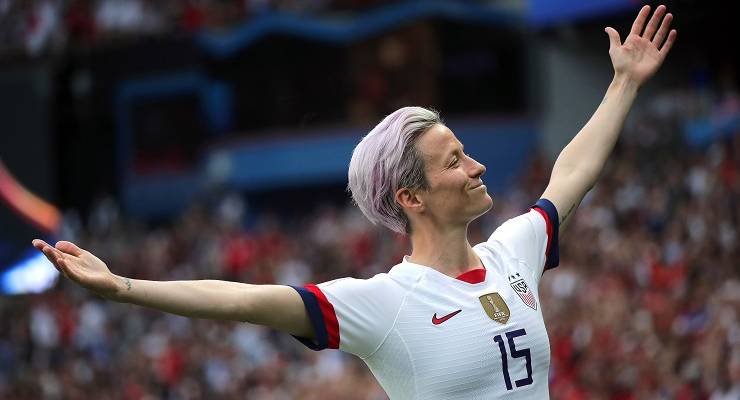
Members of the US women’s soccer team reached a landmark equal pay settlement with the US Soccer Federation yesterday. The settlement ends a six-year legal battle and promises a US$24 million bonus to match those of the US men’s team. Makes sense, considering they’ve outperformed the men’s team on the world stage for years.
Probably more significant is the federation’s promise to equalise pay between the men’s and women’s national teams in the teams’ next collective bargaining agreements. This move will see millions of dollars pushed towards a new generation of women’s national team players.
The equal pay settlement is being widely celebrated as a win for women and equal pay across the board.
As former US women’s soccer team captain Megan Rapinoe says: “When we win, everyone wins!”
Democratic nomination hopeful Elizabeth Warren said it straight, tweeting, “It’s 2022, and women shouldn’t have to keep fighting for equal pay.”
The US women’s soccer team joins Ireland, Australia, the Netherlands, Norway, New Zealand, England and Brazil in paying female players equal match fees. But in all countries the men will likely keep out-earning women due to the greater prize money on offer.
Meanwhile in Australia’s favourite sport — Aussie rules — there remains a significant gender pay gap between the women’s and men’s codes. The average player salary in the men’s competition in 2018 was $362,471, while women players were paid between $13,400 and $24,600 per season to play the game — all while working other jobs so they could do things like eat and pay rent.








Sport is now a branch of show business. In show biz, performers earn according to their ability to draw an audience. The sports in which men’s and women’s national teams get equal pay are those in which the women’s team does substantially better in international competition that the men’s team, and accordingly draw audiences that are at least as large as the men’s team.
Like it or not, women’s AFL draws small crowds to live matches and I doubt that very many watch on TV. A tiny fraction of the viewing public drawn by men’s AFL. To suggest, or even faintly hint, that the players should get equal pay is utterly absurd.
Not so. The USWNT have outperformed the US men for some time, but performance currently are pretty similar between the national teams of the other nations listed.
You missed the point. I could be the worlds best two up player, but if no one wants to watch me, then what’s the rational for paying me the big dollars. The sponsorship dollars arent there.
Then there is the arguement of why women’s soccer should get top dollar while women’s t balls get peanuts, even if they were on the top of the international t ball league?
If the USA women’s soccer team ended at the bottom of the ladder and the men on the top, are the women’s team going to offer a pay cut. I doubt it.
While offering higher salaries will entice more girls into soccer (a great thing) it’s also counter productive as males can see clear as day the women’s league isnt in the same league so to speak, yet they get paid the same. That’s not going to help feminism’s cause one bit.
This news is about women’s national teams, including Australia’s. Difficult to see its relevance to ‘Australia’s favourite sport’.
Very sceptical of WAFL, not the women, but how the corporate AFL, paranoid about competitive threats, gutted existing women’s leagues (which did exist) in Melbourne at least, poaching players from other codes and AFL media using WAFL to smother (international) women’s football stories……
Fair enough to pay Soccer players the same money because both men and women soccer team play for the same time period. Also essentially Soccer is a ladies type of football, no touchee.
Other codes of football do not have equal attraction they fill in TV time for visuals but the skill levels and crowds are of the equivalence of high school football and as equally exciting. But high school footy is at times more exciting then the professionals – but in patches.